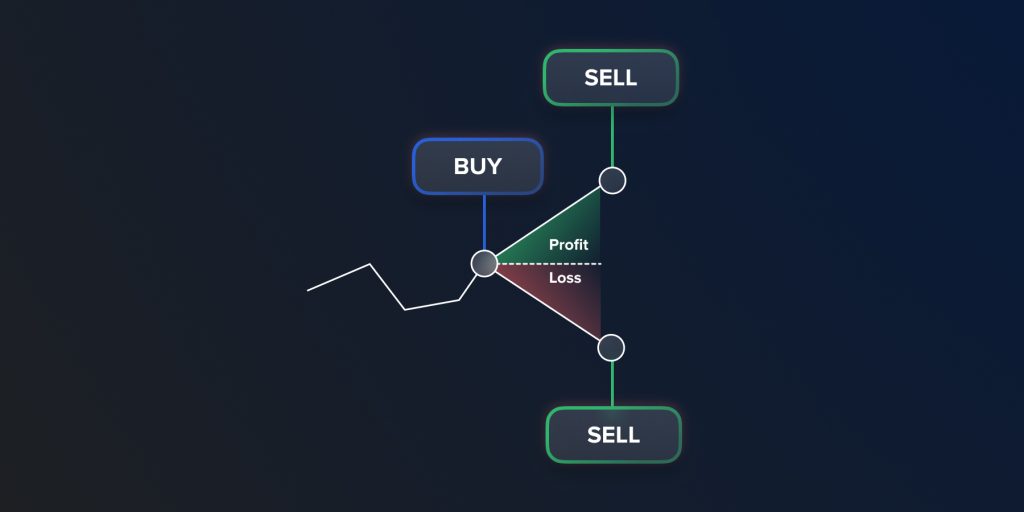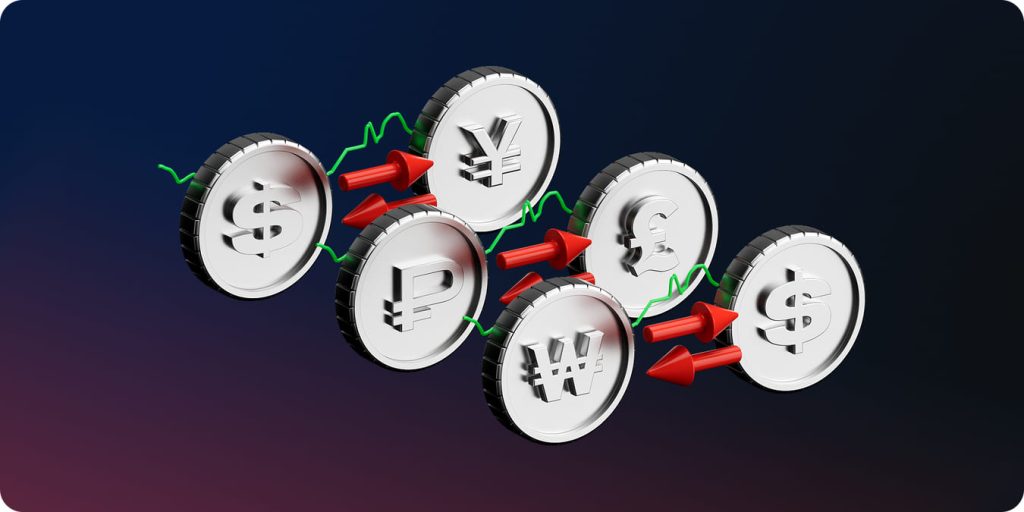
Quyền chọn bán và quyền chọn mua – Mọi thứ bạn cần biết
Mục lục
Tùy chọn là gì?
Quyền chọn là hợp đồng cho phép bạn có quyền—nhưng không bắt buộc—mua hoặc bán một tài sản cơ sở ở một mức giá cụ thể trước một ngày đáo hạn nhất định. Quyền chọn mang lại cho bạn sự linh hoạt trong chiến lược đầu tư, cho phép bạn đầu cơ theo xu hướng thị trường với số vốn ít ỏi hoặc phòng ngừa các vị thế hiện có trước những biến động giá tiêu cực.
Điều quan trọng là phải hiểu các khối xây dựng đơn giản của các tùy chọn trước khi đi sâu vào các chiến lược phức tạp hơn:
- Tài sản cơ sở: Chứng khoán mà hợp đồng quyền chọn dựa trên (cổ phiếu, ETF, chỉ số, v.v.)
- Giá thực hiện: Giá đã thỏa thuận mà bạn có thể mua hoặc bán tài sản cơ sở
- Phần thưởng: Chi phí tiền bạn phải trả để mua hợp đồng quyền chọn
- Ngày hết hạn: Ngày hết hạn hợp đồng quyền chọn
- Quy mô hợp đồng: Thông thường là 100 đơn vị tài sản cơ sở
Quyền chọn tăng giá trị dựa trên giá trị của tài sản cơ sở và là một loại công cụ tài chính phái sinh. Khác với cổ phiếu, về mặt lý thuyết có thể tồn tại mãi mãi, quyền chọn là ngắn hạn và sẽ hết hạn mà không có giá trị nếu không được thực hiện hoặc bán trước thời hạn.
Quyền chọn mua là gì?
Quyền chọn mua cho bạn quyền (nhưng không phải nghĩa vụ) mua một tài sản cơ sở với giá thực hiện vào hoặc trước ngày hết hạn. Hãy hình dung quyền chọn mua như thể bạn có thể "mua lại" một tài sản từ một tài sản khác với mức giá đã định trước.
Mua quyền chọn mua (quyền chọn mua dài hạn)
Khi mua quyền chọn mua, bạn đang đặt cược vào khả năng giá của tài sản cơ sở sẽ tăng cao hơn giá thực hiện cộng với phí quyền chọn bạn đã trả. Chiến lược này có một số ưu điểm:
- Rủi ro hạn chế: Tổn thất tồi tệ nhất của bạn được giới hạn ở mức phí bảo hiểm đã trả
- Tiềm năng lợi nhuận không giới hạn: Lợi nhuận tăng khi giá trị tài sản cơ sở tăng
- Đòn bẩy: Giữ vị thế lớn với số vốn tương đối ít
Ví dụ, giả sử cổ phiếu XYZ hiện đang giao dịch ở mức 50 đô la. Bạn mua một quyền chọn mua với giá thực hiện là 55 đô la, đáo hạn sau ba tháng với mức phí bảo hiểm là 2 đô la cho mỗi cổ phiếu (tổng cộng 200 đô la cho mỗi hợp đồng). Khi giá XYZ tăng lên 65 đô la trước khi đáo hạn, quyền chọn của bạn sẽ có giá trị ít nhất 10 đô la cho mỗi cổ phiếu (1.000 đô la), mang lại cho bạn lợi nhuận 400% so với khoản đầu tư ban đầu 200 đô la.
Nhưng nếu XYZ vẫn có giá trị dưới 55 đô la khi đáo hạn, quyền chọn của bạn sẽ hết hạn mà không có giá trị gì, và bạn sẽ mất toàn bộ khoản phí bảo hiểm 200 đô la. Điểm hòa vốn của giao dịch này sẽ là 57 đô la (giá thực hiện + phí bảo hiểm).
Bán quyền chọn mua (Viết quyền chọn mua)
Khi bạn bán (hoặc viết) một quyền chọn mua, bạn ở phía đối diện của giao dịch, nhận được phí quyền chọn trước nhưng có khả năng buộc mình phải bán tài sản cơ sở ở mức giá thực hiện. Điều này có thể được thực hiện theo hai cách:
- Quyền chọn mua có bảo đảm: Bán lệnh mua đối với cổ phiếu bạn sở hữu
- Cuộc gọi trần trụi: Bán quyền chọn mua mà không sở hữu tài sản cơ sở (rủi ro cao hơn)
Quyền chọn mua có bảo đảm (Covered call) giúp bạn kiếm lời từ cổ phiếu đang nắm giữ, nhưng lại hạn chế lợi nhuận tối đa trong trường hợp cổ phiếu tăng giá đáng kể. Chiến lược quyền chọn mua có bảo đảm hấp dẫn các nhà đầu tư thu nhập muốn tăng lợi nhuận từ cổ phiếu mà họ sẵn sàng bán với giá thực hiện.
Quyền chọn trần là một trong những chiến lược quyền chọn rủi ro nhất vì khoản lỗ giả định của bạn là không giới hạn nếu giá tài sản cơ sở tăng đáng kể. Chiến lược này chỉ nên được cân nhắc bởi các nhà giao dịch giàu kinh nghiệm với mức độ rủi ro và vốn cao.
Quyền chọn bán là gì?
Quyền chọn bán cho bạn quyền (nhưng không phải nghĩa vụ) bán một tài sản cơ sở với giá thực hiện trước ngày hết hạn. Điều này giống như quyền chọn "bán" cổ phiếu của bạn cho người khác với mức giá chắc chắn.
Mua quyền chọn bán (quyền chọn mua dài hạn)
Khi mua quyền chọn bán, bạn đang đặt cược giá xuống rằng giá trị của tài sản cơ sở sẽ giảm xuống dưới giá thực hiện trừ đi phí bảo hiểm đã trả. Người mua quyền chọn bán được hưởng lợi từ:
- Rủi ro hạn chế: Mức mất mát tối đa giới hạn ở mức phí bảo hiểm đã trả
- Tiềm năng lợi nhuận lớn: Lợi nhuận tăng khi giá trị tài sản cơ sở giảm
- Bảo vệ danh mục đầu tư: Có thể đóng vai trò bảo hiểm cho các vị thế mua hiện có
Ví dụ, nếu cổ phiếu ABC ở mức 80 đô la, bạn có thể mua quyền chọn bán với giá thực hiện là 75 đô la trong hai tháng với mức phí bảo hiểm là 3 đô la (300 đô la mỗi hợp đồng). Nếu giá ABC giảm xuống còn 65 đô la, quyền chọn bán của bạn có giá trị tối thiểu là 10 đô la mỗi cổ phiếu (1.000 đô la), tương đương với mức lợi nhuận 233%.
Nếu ABC vẫn trên 75 đô la khi đáo hạn, quyền chọn của bạn sẽ vô giá trị và bạn mất khoản phí bảo hiểm 300 đô la. Điểm hòa vốn của bạn là 72 đô la (giá thực hiện - phí bảo hiểm).
Bán quyền chọn bán (Viết quyền chọn bán)
Nếu bạn bán quyền chọn bán, bạn sẽ nhận được phí bảo hiểm trước nhưng có thể cần phải mua cổ phiếu cơ sở với giá thực hiện nếu người nắm giữ thực hiện quyền. Bán quyền chọn bán là tốt khi
- Bạn muốn kiếm tiền trong thị trường trung lập hoặc tăng giá
- Bạn sẵn sàng mua tài sản cơ bản ở mức giá thực hiện (có khả năng rẻ hơn giá thị trường hiện tại)
- Bạn đã quen thuộc với các rủi ro và có đủ vốn để trang trải các khoản nợ tiềm ẩn
Quyền bán được bảo đảm bằng tiền mặt đòi hỏi phải giữ đủ tiền mặt để mua cổ phiếu nếu chúng được thực hiện, trong khi quyền bán không có tài sản thế chấp và rủi ro hơn, đòi hỏi kinh nghiệm giao dịch cao hơn và phê duyệt ký quỹ.
Định giá và thẩm định quyền chọn
Hiểu được cách định giá quyền chọn giúp bạn nhìn thấy giá trị và không phải trả nhiều hơn mức cần thiết cho hợp đồng. Định giá quyền chọn bao gồm hai thành phần:
1. Giá trị nội tại: Số tiền mà một quyền chọn có giá trị (nếu có)
Đối với lệnh gọi: Max(0, Giá cơ sở - Giá thực hiện)
Đối với quyền bán: Max(0, Giá thực hiện - Giá cơ sở)
2. Giá trị thời gian: Phần phí bảo hiểm vượt quá giá trị nội tại
- Phản ánh khả năng biến động giá thuận lợi trước khi hết hạn
- Giảm dần khi ngày hết hạn đến gần (giảm dần theo thời gian)
Có một số yếu tố tác động đến giá quyền chọn:
- Giá cơ bản: Giá thị trường hiện tại của tài sản
- Giá thực hiện: Giá thực hiện đã thỏa thuận trước
- Thời gian hết hạn: Các khung thời gian dài hơn thường đòi hỏi phí bảo hiểm cao hơn
- Biến động: Biến động giá dự kiến cao hơn có nghĩa là phí bảo hiểm cao hơn
- Lãi suất:Lãi suất cao hơn sẽ có xu hướng làm tăng phí bảo hiểm quyền chọn mua và giảm phí bảo hiểm quyền chọn bán
- Cổ tức: Khoản thanh toán cổ tức dự kiến có thể tác động đến giá cả
Người Hy Lạp về định giá quyền chọn
"Người Hy Lạp" được các nhà giao dịch quyền chọn sử dụng để đo lường các khía cạnh khác nhau của rủi ro và độ nhạy cảm về giá:
- Đồng bằng: Biểu thị mức giá của một quyền chọn sẽ thay đổi như thế nào khi giá của công cụ cơ sở thay đổi 1 đô la (giữa -1 và +1)
- Gamma: Biểu thị cách delta sẽ thay đổi (đạo hàm bậc hai)
- Theta: Biểu thị sự suy giảm theo thời gian hoặc sự xói mòn của phí bảo hiểm mỗi ngày
- Vega: Thể hiện độ nhạy cảm với những thay đổi trong biến động ngụ ý
- Rho: Thể hiện mức độ nhạy cảm với những thay đổi về lãi suất
Các chiến lược này cho phép các nhà giao dịch hiểu được vị thế quyền chọn của họ sẽ hoạt động như thế nào trong các điều kiện thị trường khác nhau và thay đổi chiến lược của họ cho phù hợp.
Chiến lược giao dịch quyền chọn
Quyền chọn không chỉ cung cấp tính linh hoạt khi mua và bán mà còn cho phép các chiến lược tinh vi đáp ứng hầu hết mọi quan điểm của thị trường hoặc khả năng chịu rủi ro.
Lệnh mua có bảo hiểm
Chiến lược phổ biến này bao gồm việc sở hữu tài sản cơ sở và bán quyền chọn mua dựa trên vị thế của bạn. Lợi ích là:
- Thu nhập nhiều hơn từ việc thu phí bảo hiểm
- Rủi ro tương đối thấp hơn so với việc chỉ sở hữu cổ phiếu
- Có thể áp dụng nhiều lần để tạo ra thu nhập ổn định
Sự đánh đổi chính là khả năng bỏ lỡ một khoản lợi nhuận lớn nếu tài sản cơ bản tăng giá mạnh hơn giá thực hiện của bạn.
Đặt bảo vệ
Đôi khi được gọi là "quyền chọn bán kết hợp", chiến lược này bao gồm việc mua quyền chọn bán cho một vị thế mua cổ phiếu để tạo ra một mức giá sàn. Thực chất, bạn đang mua sự bảo vệ trước sự sụt giảm mạnh của giá cổ phiếu. Mặc dù điều này hạn chế được khoản lỗ tiềm ẩn của bạn, chi phí quyền chọn bán sẽ làm giảm tổng lợi nhuận của bạn nếu giá không biến động hoặc tăng.
Chênh lệch giá mua và bán
Chiến lược chênh lệch giá bao gồm việc mua và bán quyền chọn ở nhiều mức giá thực hiện hoặc ngày hết hạn khác nhau cùng một lúc:
- Bull Call Spread: Mua quyền chọn mua có giá thực hiện thấp hơn, bán quyền chọn mua có giá thực hiện cao hơn
- Bull Put Spread: Bán quyền chọn bán có giá thực hiện cao hơn, mua quyền chọn bán có giá thực hiện thấp hơn
- Bear Call Spread: Bán quyền chọn mua giá thực hiện thấp hơn, mua quyền chọn mua giá thực hiện cao hơn
- Bear Put Spread: Mua quyền bán có giá thực hiện cao hơn, bán quyền bán có giá thực hiện thấp hơn
Những chiến lược này cho phép bạn hạn chế chi phí khi đi theo hướng có lợi nhuận và thua lỗ ở mức tối đa.
Straddles và Strangles
Các chiến lược này tận dụng sự biến động dự kiến thay vì chuyển động theo hướng:
- Long Straddle: Mua cả quyền bán và quyền mua với một mức giá thực hiện
- Thắt cổ dài: Mua cả quyền bán và quyền mua ở hai mức giá thực hiện khác nhau (giá thực hiện quyền bán thấp hơn giá thực hiện quyền mua)
Cả hai chiến lược đều tận dụng biến động giá lớn theo cả hai hướng nhưng cần có đủ biến động để trang trải chi phí cho cả hai loại phí bảo hiểm.
Quản lý rủi ro với các tùy chọn
Mặc dù các quyền chọn có thể tạo ra đòn bẩy và khuếch đại lợi nhuận, nhưng quản lý rủi ro tốt vẫn là điều cần thiết để đạt được thành công lâu dài.
Định cỡ vị trí
Đừng bao giờ mạo hiểm quá một tỷ lệ nhỏ trong danh mục đầu tư của bạn vào các vị thế quyền chọn đầu cơ. Hãy cân nhắc:
- Giới hạn các giao dịch quyền chọn đầu cơ ở mức 1-5% danh mục đầu tư của bạn
- Cho phép bạn thoải mái mất toàn bộ phí bảo hiểm mà không gây nguy hiểm cho tình hình tài chính của bạn
- Quy mô vị thế chỉ tăng sau khi đã thiết lập được lợi nhuận ổn định
Chiến lược phòng ngừa rủi ro
Quyền chọn là công cụ phòng ngừa rủi ro tốt hơn để trang trải các khoản đầu tư khác. Bạn có thể:
- Sử dụng quyền bán để phòng ngừa các vị thế mua cổ phiếu trong những tình huống không chắc chắn
- Nghiên cứu các vòng cổ (mua quyền chọn bán và bán quyền chọn mua) để thiết lập phạm vi giá
- Sử dụng lịch chênh lệch để quản lý thông báo thu nhập hoặc các sự kiện khác
Quản lý rủi ro nhiệm vụ
Khi giao dịch quyền chọn, bạn phải hiểu rõ rủi ro và ý nghĩa của việc phân bổ rủi ro. Một số cách để thực hiện điều này bao gồm:
- Quyền chọn kiểu Mỹ có thể được thực hiện bất kỳ lúc nào trước khi hết hạn
- Ngày trả cổ tức có thể dẫn đến việc phân bổ cổ tức sớm
- Có đủ tiền mặt hoặc cổ phiếu dự trữ để đáp ứng các nghĩa vụ tiềm năng
Những quan niệm sai lầm và cạm bẫy phổ biến với các tùy chọn
Những người giao dịch quyền chọn mới có thể trở thành nạn nhân của những quan niệm sai lầm phổ biến có thể gây tốn kém.
"Các quyền chọn cũng giống như cờ bạc"
Sự hiểu lầm này là do các nhà đầu cơ mua quyền chọn ngoài giá trị thực (out-of-the-money) với kỳ vọng lợi nhuận khổng lồ mà không nhận thức được xác suất hoặc giá cả. Trong thế giới thực, quyền chọn là những công cụ mạnh mẽ có thể được áp dụng một cách thận trọng hoặc tích cực tùy thuộc vào kế hoạch và khẩu vị rủi ro của bạn.
Điều mà hầu hết mọi người không biết là người bán quyền chọn thường có lợi thế, và thống kê cho thấy khoảng 60-80% quyền chọn hết hạn mà không có giá trị. Điều này không nhất thiết là một lập luận ủng hộ việc bán hơn là mua - nó chỉ nhấn mạnh tầm quan trọng của việc hiểu rõ xác suất và sự suy giảm theo thời gian.
Bỏ qua sự biến động ngụ ý
Hiểu rõ độ biến động ngụ ý (IV) là yếu tố quan trọng nhất khi giao dịch quyền chọn. Việc mua quyền chọn khi IV đang ở mức cao nhất mọi thời đại thường mang lại kết quả đáng thất vọng, ngay cả khi dự đoán của bạn là chính xác. Phí bảo hiểm bạn phải trả có thể bị thổi phồng một cách giả tạo đến mức vị thế vẫn tạo ra khoản lỗ mặc dù giá biến động tốt.
Hãy nghĩ theo cách này, giao dịch quyền chọn mà không quan tâm đến sự biến động cũng giống như lái thuyền mà không nghĩ đến dự báo thời tiết.
Giao dịch quá mức
Sức mạnh của đòn bẩy quyền chọn đủ sức cám dỗ nhiều nhà giao dịch sử dụng đòn bẩy quá mức. Giao dịch quá mức vốn hoặc nắm giữ quá nhiều vị thế chắc chắn sẽ khiến họ mất rất nhiều tiền một cách nhanh chóng.
Hãy nhớ rằng tính kiên nhẫn và tính chọn lọc là những đức tính cần có khi giao dịch quyền chọn. Một trong những nhà giao dịch quyền chọn giỏi nhất thế giới thực hiện khá ít giao dịch, nhưng mỗi giao dịch đều hấp dẫn không thể cưỡng lại dựa trên tỷ lệ rủi ro-lợi nhuận.
Cách bắt đầu giao dịch quyền chọn
Nếu bạn muốn thêm các lựa chọn vào kế hoạch đầu tư của mình, sau đây là các bước cần thực hiện để bắt đầu:
- Giáo dục là trên hết: Hãy dành thời gian tìm hiểu về các nguyên tắc cơ bản của quyền chọn từ sách, khóa học và các trang web uy tín trước khi thực hiện giao dịch đầu tiên.
- Mở đúng tài khoản: Hãy đảm bảo tài khoản môi giới của bạn được cấp phép giao dịch quyền chọn. Các nhà môi giới có các điều kiện tiên quyết khác nhau về kinh nghiệm và vốn tùy thuộc vào chiến lược.
- Bắt đầu với Giao dịch Giấy: Đào tạo và thực hành sử dụng giao dịch demo để tích lũy kinh nghiệm mà không mất tiền.
- Bắt đầu với các chiến lược đơn giản: Nắm vững các giao dịch mua có bảo đảm, giao dịch bán có bảo đảm bằng tiền mặt hoặc chênh lệch rủi ro xác định trước khi thử những giao dịch phức tạp.
- Bắt đầu nhỏ: Nếu bạn chuyển sang giao dịch trực tiếp, hãy bắt đầu sử dụng các vị thế tối thiểu để kiểm soát rủi ro trong khi bạn tích lũy kinh nghiệm.
Kết luận cuối cùng
Giao dịch quyền chọn là một công cụ hữu ích trong kho vũ khí đầu tư của bạn nếu được áp dụng đúng cách. Cho dù bạn muốn tạo thu nhập, bảo vệ danh mục đầu tư hay đặt cược vào biến động giá với rủi ro tối thiểu, quyền chọn mang lại sự linh hoạt mà ít công cụ nào khác có thể làm được.
Cũng như thành công trong bất kỳ phương pháp đầu tư phức tạp nào đều dựa trên nền tảng giáo dục, thực hành và kỷ luật, điều tương tự cũng đúng với quyền chọn. Bằng cách nghiên cứu những kiến thức cơ bản được nêu trong cuốn sách này và trau dồi kỹ năng theo thời gian, bạn sẽ có vị thế tốt để tận dụng tiềm năng của giao dịch quyền chọn mà không mắc phải những cạm bẫy thông thường.
FAQ
Quyền chọn kiểu Mỹ luôn có thể thực hiện cho đến ngày đáo hạn, trong khi quyền chọn kiểu châu Âu chỉ có thể thực hiện khi đáo hạn. Hầu hết quyền chọn cổ phiếu là kiểu Mỹ, còn quyền chọn chỉ số thường là kiểu châu Âu.
Một số chiến lược quyền chọn như quyền chọn mua có bảo đảm (Covered Call) hoặc quyền chọn bán có bảo đảm bằng tiền mặt (Cash-Secured Put) có thể phù hợp với người mới bắt đầu đã được đào tạo bài bản. Tuy nhiên, các chiến lược phức tạp hơn cần được áp dụng thận trọng cho đến khi bạn đã có kinh nghiệm và kiến thức.
Hãy nhớ rằng "Quyền chọn mua tăng, Quyền chọn bán giảm" – người mua quyền chọn mua hưởng lợi khi giá tăng; người mua quyền chọn bán hưởng lợi khi giá giảm. Ngoài ra, hãy nhớ rằng quyền chọn mua cho bạn quyền mua, trong khi quyền chọn bán cho bạn quyền bán.
Đã cập nhật:
23 tháng 4, 2025



